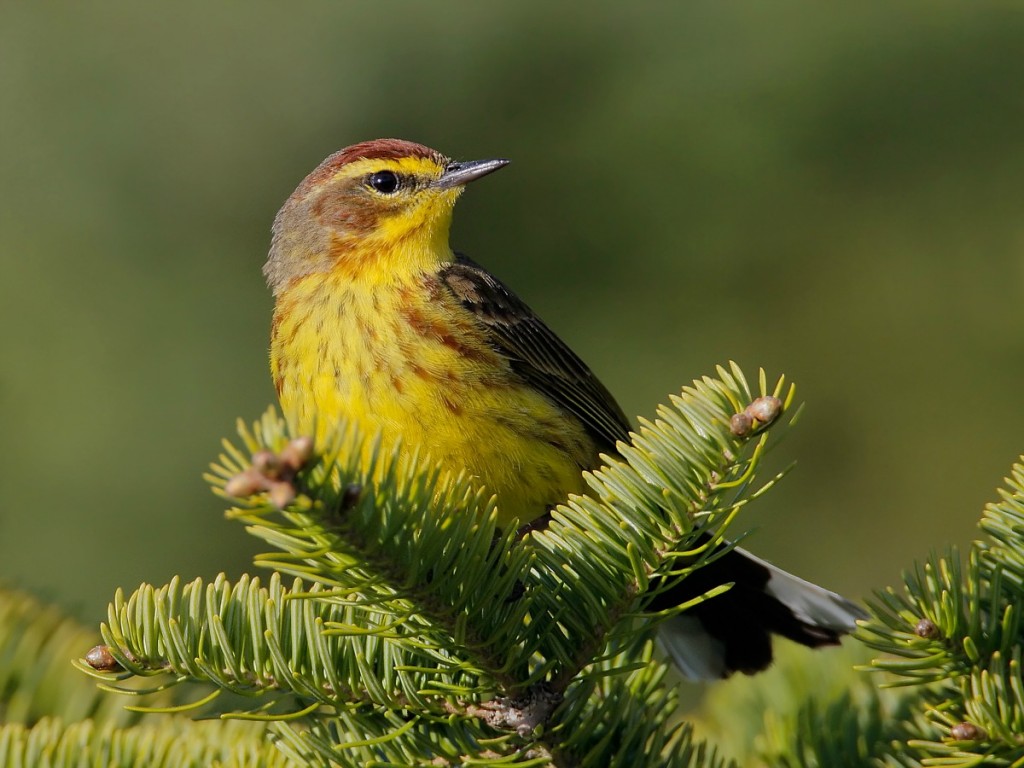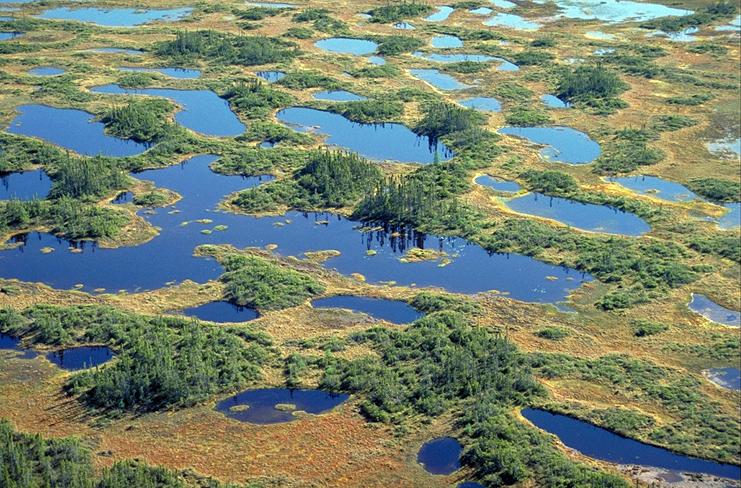The Boreal Songbird Initiative and Ducks Unlimited have released a 20 page bulletin entitled 10 Cool Canadian Biodiversity Hotspots. The report highlights ten locations throughout our boreal forest that provide more detail and insight into its special biodiversity and conservation values.
Hudson and James Bay Lowlands, Manitoba, Ontario, Quebec
If the boreal forest is the global ‘king’ of carbon, the Hudson Bay Lowlands would be the crown jewel. Wetlands dominate this open, expansive region in a way that is rarely found anywhere on Earth, and almost nowhere in terms of sheer scale.
In fact, the greater Hudson Bay Lowlands (which include the James Bay Lowlands) form the third largest wetland region globally and contain the single largest peatland system on Earth. Peatlands are particularly rich in carbon, meaning the Hudson Bay Lowlands are potentially the most carbon-dense terrestrial ecoregion on Earth.
The 373,000-km² expanse of wetlands and rivers that stretch from northeastern Manitoba to the James Bay region of Quebec is also mostly intact. Its vast area provides habitat for perhaps the world’s highest abundance of the peat-loving Palm Warbler and very likely a high proportion of the global population of the mysterious Yellow Rail—a small, chicken-like marsh bird that is rarely seen and little studied.
The marine shores of the region are among the world’s most important migratory feeding concentrations for shorebirds and waterfowl. In fact, the region as a whole likely hosts a large proportion of the global populations of many shorebird and waterfowl species during migration.
Unusually high counts of species like Red Knot, Hudsonian Godwit, Ruddy Turnstone, Black Scoter, and Lesser Snow Goose indicate incredibly high use of these shoreline habitats.
These lowlands are also unique as the host of the southernmost population of polar bears in the world—the only known population that regularly dens in burrows in earth rather than snow and ice.
Both migratory tundra caribou and woodland caribou occur within the Hudson and James Bay Lowlands. Estuaries along the coast are also vital habitat for beluga whales, walrus, ringed seals, and bearded seals.
Conservation Status
Large-scale hydroelectric projects have greatly altered a number of major river systems within the region, including: the Nelson and Churchill Rivers of Manitoba, the Albany and Moose River watersheds of Ontario, and the La Grande, Eastmain, and Rupert Rivers of Quebec.
There are a number of active and past mining projects in the area, including the Victor Diamond Mine near Attawapiskat in Ontario, and mineral exploration and early stage development is intensifying in the “Ring of Fire” chromite deposits of northern Ontario.
Polar bear denning sites have been protected in Wapusk National Park and Polar Bear Provincial Park.
Land-use planning is underway in many Aboriginal communities in Ontario and Quebec, and the provincial governments of Ontario and Quebec are committed to protecting at least 50% of the northern portions of both provinces. Currently, vast proportions of the area are unprotected and are currently open to mineral exploration and staking without the benefit of regional land planning for development and associated infrastructure.




